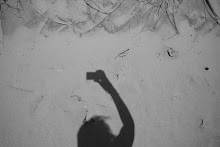Le Joy of Painting
Do you know Bob Ross? He is a painter who had his own TV show where he taught people to paint landscapes, using words such as "happy little clouds" and "happy little trees". A testimonial to German TV, 12 years after the show has stopped filming, it is still aired here. I have never actually painted with him, but I simply love watching him work. It sooths me, he is always so calm. His voice is so peaceful and I get lost in his landscapes of happiness. Even though he filmed his show in the '80s, his spirit somehow embodies the hippiness of the '60s and '70s for me. Is that what everybody was like back then, just completely chilled out, never in a rush? I just finished A Lotus Grows in the Mud which is Goldie Hawn's autobiography and she describes a black out as:
"This one night became, for me, the epitome of the flower-power, peace-and-love days of the sixties. No one slept. Everybody loved each other; strangers made friends with strangers, and we have the wildest, funniest, most romantic night."
I stumble upon Bob Ross' The Joy of Painting show sometimes in the middle of the night on TV and for a stressed, sleepless mind he is a sanctuary. Have a happy little weekend.
Labels: Links

3 Comments:
Yes, Bob Ross is painting landscapes indeed, but in my opinion, his paintings do not tell a story, they don't have a message, except that everyone in principle is able to make paintings. His paintings lack understanding of values, such as the miracles of Renaissance painters that saw for the first time "nature" as worthy to paint next to humans. Up to that time, most societies where based on agriculture and when someone reflected on nature, it was more because of difficulties nature gave. Then, in the enlightment movement, nature became an object for scientific study, and a balance was searched between aesthetics (subjective impressions) and real, objective observations. After this, humans started to emphasize the subjective worlds, to escape confrontation with the difficult reality of the 19th century. In that time, there were quite some wars in Europe because of different political movements, and the beginning of industrialization. Landscapes became symbols for worlds of peace and happiness, hiding all the difficulties of real live. And when photography came up, painters emphasized even more the subjective aspects of nature. How should paintings ever come closer to the reality which photographs can provide ? There was another small revolution related to this: Color in tubes. This allowed the artist for the first time to paint outside in nature. And put his personal perception into the painting. Bob Ross does not show this interest for nature or the difficulties in representing nature or life. All he does is some experiments with colors. If you would compare this with cooking, his work probably comes close to cooking out of the freezer. True, from the outside, you can get magnificent effects, but the meal would just not have a good substance compared with real food. Also true, modern times does not allow too often thorough learning from experiments. From a scientific point of view the 60ies and 70ies were quite interesting as well. People started begin to understand the working of integrated circuits and information processing. One very interesting author from that time was also Hermann Hesse who got the Nobel prize in that period. He also explains the difficulties of humans in that post-world-war period, and the absurdity of meaning with the thread of an atom bomb. Of course, there are many beautiful moments in every period, but fearful moments are just equally part of them.
-patrick
ups... Hermann Hesse won the Nobel Prize in literature in 1947, and wrote the book I had in mind in the 1920ies. Writers who won the award in the 60ies and 70ies were:
Jean-Paul Sartre,
Heinrich Boell,
Samuel Beckett
Also, there was the Vietnam war in that time... I once saw a very fascinating painting by a Japanese artist called On Kawara. The painting was just depicting 1975.
Une autre pensee a la nature:
"Qu'est-ce que l'homme dans la nature ?
Un neant a l'egard de l'infini,
un tout a l'egard du neant,
un milieu entre rien et tout."
(What is man in nature ?
Nothing in relation to the infinite,
everything in relation to nothing,
a mean between nothing and everything.)
Blaise Pascal, Pensees, n.4., 1670
Post a Comment
<< Home